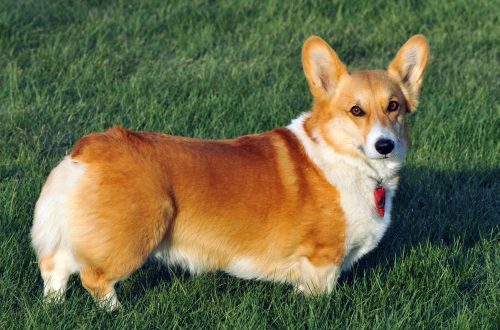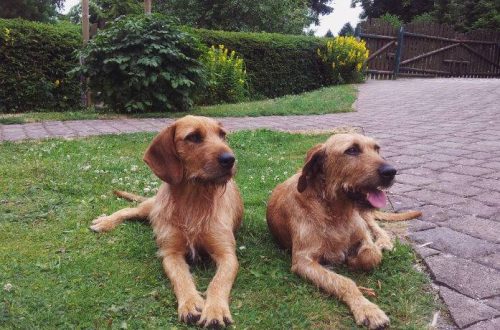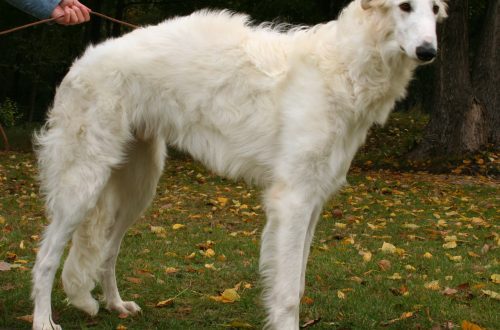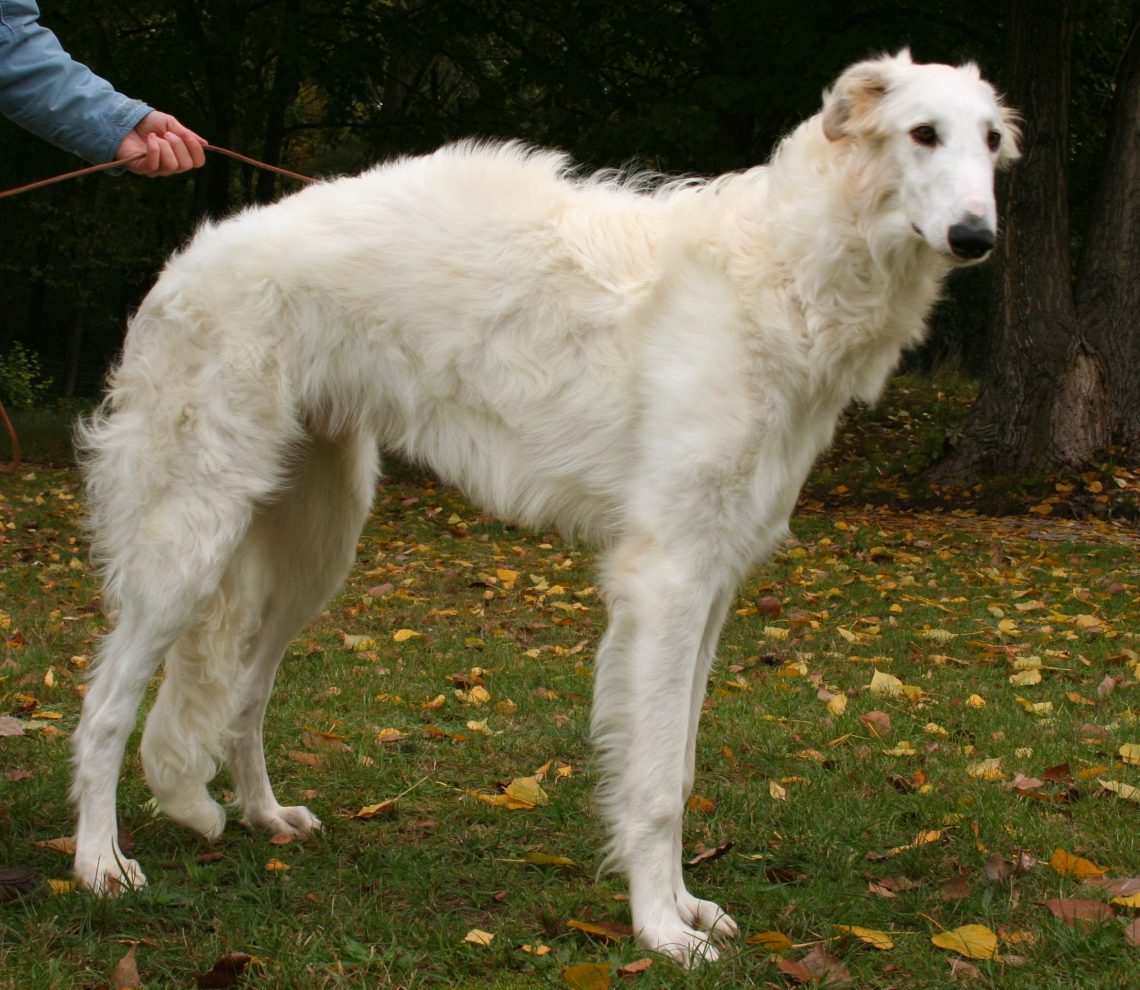
Borzoi
Contents
- Other names: Russian greyhound, Russian Borzoi
- Characteristics of Borzoi
- Basic moments
- The history of the breed Russian Borzoi
- Video: Russian greyhound (Borzoi)
- The appearance of the Russian canine greyhound
- Photo of Russian Borzoi
- The nature of the Russian Borzoi greyhound
- Borzoi Education and training
- Hunting with a Russian Borzoi
- Maintenance and care
- Health and disease of the Russian Borzoi greyhound
- How to choose a Borzoi puppy
- Photos of Russian greyhound puppies
- How much does a Russian borzoi cost?
Other names: Russian greyhound, Russian Borzoi
The Russian Psov Greyhound (RPG) is a large hunting dog that has proven itself excellently in working with a fur-bearing animal. Also involved in the hunt for wolves.
Characteristics of Borzoi
| Country of origin | Russia |
| The size | large |
| Growth | 65–80 cm |
| Weight | 35–48 kg |
| Age | 10–12 years old |
| FCI breed group | greyhounds |
Basic moments
- The Russian canine greyhound is an excellent hunter and no less wonderful friend, but other dog professions are not given to this breed. In particular, having entrusted the protection of your own home to a greyhound, do not be surprised if everyone who is not lazy will enter it.
- In everyday life, Russian Borzois are relatively calm and absolutely not aggressive: in order to provoke a dog to bark, you will have to try very hard.
- Hunting instincts drive Russian Borzoi even on ordinary walks. Cats, rodents and other small animals for these dogs are just game, subject to immediate capture.
- A dog can come to terms with the presence of a meowing creature in his life only if he had to grow up with him.
- The Russian Borzoi is a fairly athletic breed, whose representatives show good results in obedience and agility.
- The dry, well-groomed coat of Russian Borzoi dogs practically does not smell, and this is no coincidence. When hunting, the dog does not need extra scents, as they can alert a wild animal. But animals caught in the rain or swimming in an open pond can exude a characteristic “ambre”.
- The Russian canine greyhound is a breed that needs to give vent to its own energy and hunting instincts, so you will have to walk and train with your pet to the maximum.
- In an informal setting, in the company of the owner, Russian canine greyhounds are soft and supple. However, these proud “aristocrats” will not take on any obligations, much less serve a person.
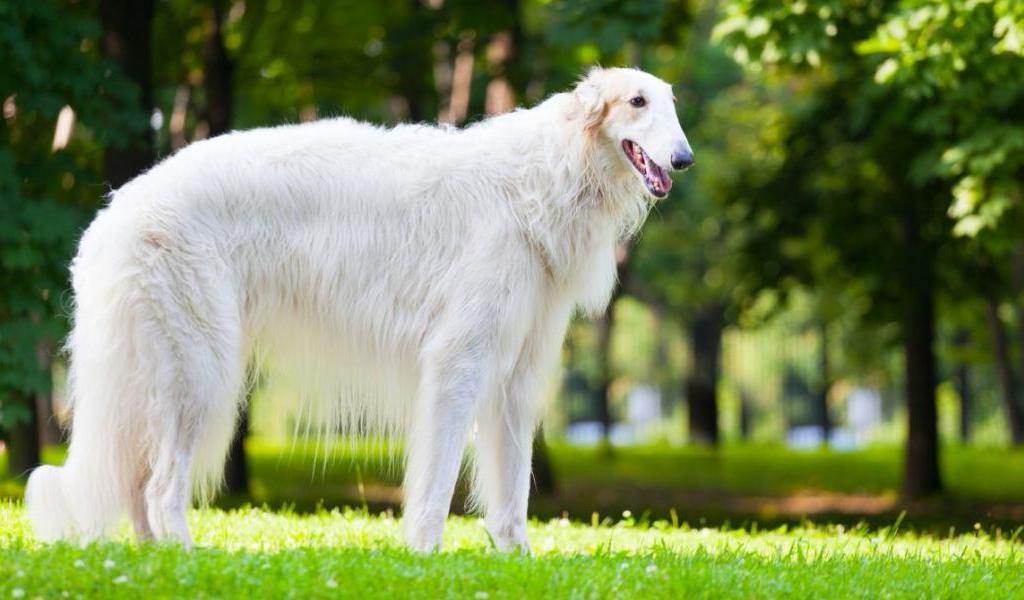
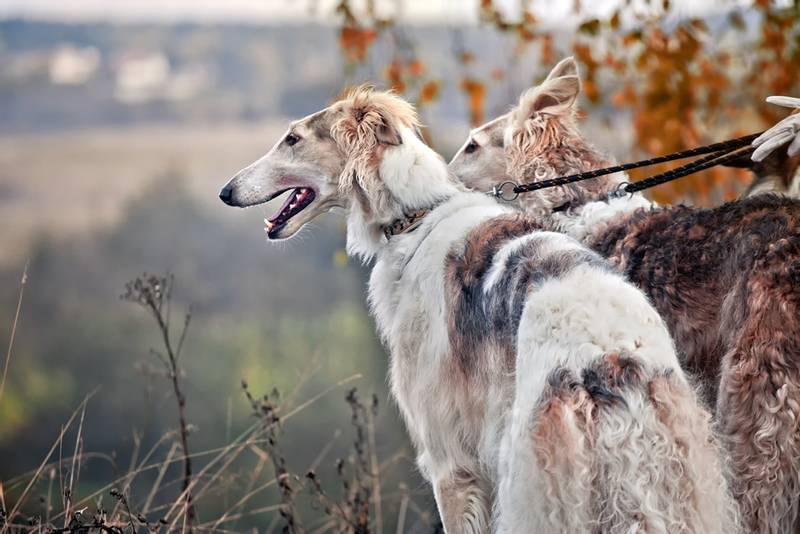
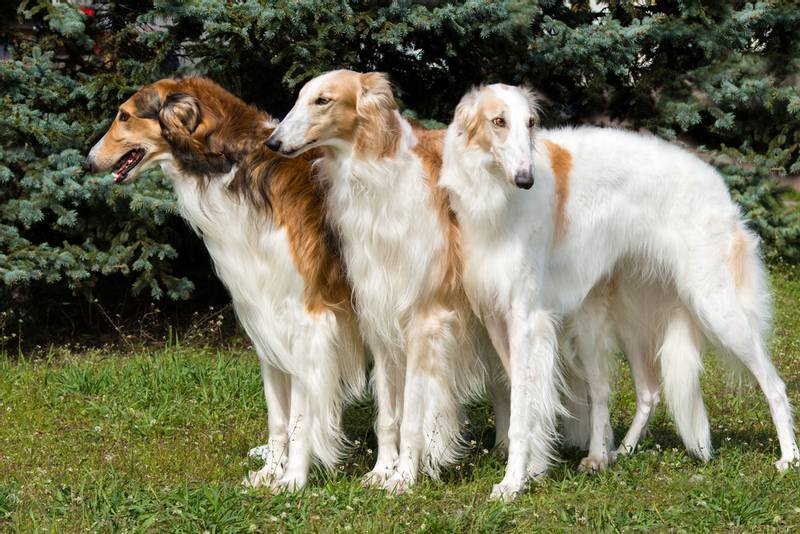
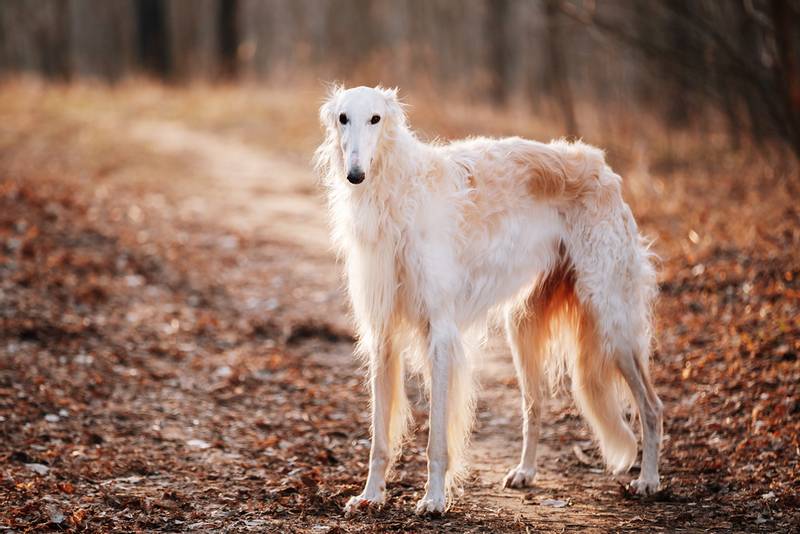
The Russian Borzoi is a breed with a long history and an aristocratic past, the content of which in the 19th century was far from being affordable for every hunting fan. Recently, Russian greyhounds have slightly departed from the traditions of their ancestors and more often drive mechanical “hares” around the fields than real oblique ones, but they have not completely lost their qualifications. To make sure of this, it is enough to let the pet off the leash during a walk and watch how famously he takes into circulation any four-legged creature that is inferior to him in size.
The history of the breed Russian Borzoi
Mentions of dogs, with which our ancestors successfully hunted not only hares, but also wolves, can be found in printed publications of the 17th century. Presumably the first and most famous breeder of canine greyhounds was the Russian Tsar Alexei Mikhailovich Romanov, who received several dogs of this breed as a gift from the Zaporozhye Cossacks. The version that the ancestors of today’s Russian greyhounds were brought to us from Persia and the Kazakh Khanate back in the time of Ivan the Terrible also has the right to life. The autocrat greatly respected baiting with greyhounds and was quite sincerely interested in new hunting breeds.
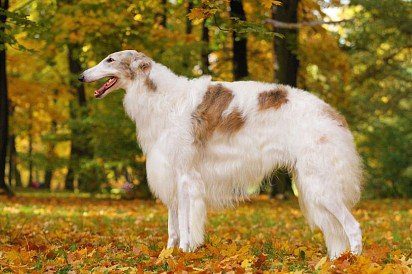
Since the 18th century, the clan of canine greyhounds has been undergoing a large-scale “pumping”. To improve the hunting qualities of the dogs, they were crossed with the Horty and English, and later with the Crimean and mountain greyhounds. Breeding activity took place spontaneously, since the main breeder of the breed remained the nobility, who kept their own kennels and had the opportunity to experiment with breeding to their fullest. Unlimited by any framework, the landowners knitted animals, guided only by their own preferences, which ultimately led to the fragmentation of the family of canine greyhounds and slowed down the standardization of the breed. As a result: the first standard for the exterior of dogs was written only in 1888.
At domestic exhibitions, the breed began to appear in 1872 and almost immediately disappointed all aesthetes who saw ordinary mestizos in animals that had lost the classic features of the Russian canine greyhound. But the panel of judges of the Moscow exhibition of the Imperial Society of Proper Hunting treated the four-legged contestants more loyally and in 1874 awarded the dog a Russian greyhound named Award a gold medal. But even this decision did not put an end to the desperate disputes of experts about how exactly the correct Russian greyhound should look like. As a result, traditionalists continued to advocate a return to the original type of appearance of the dogs, while the other half of the breeders stubbornly voted for the updated look of the greyhounds.
From the beginning of the 20th century, the breeding of Russian canine greyhounds was carried out at an accelerated pace, and by 1917 the number of purebred individuals in Russia exceeded 2000. Of course, during the years of the Civil and Great Patriotic Wars, the clan of Russian canine greyhounds suffered significant losses, but nevertheless did not cease to exist , which made it possible for Soviet enthusiasts to once again start breeding these amazing animals. The breed came to America and Canada at the beginning of the 20th century, after Europe had enough of the grace and hunting talents of its representatives and even had time to cool off a little. By the way, it was on the other side of the Atlantic that Russian canine greyhounds gained the greatest popularity, where they were accepted not as hunters, but as sports, image pets.
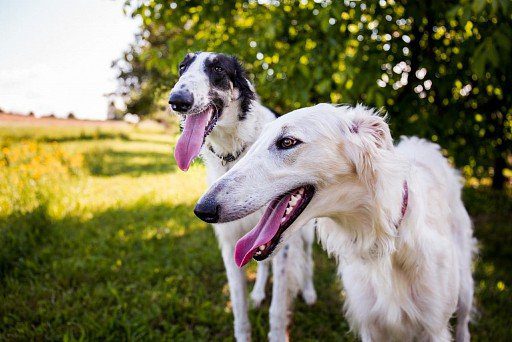
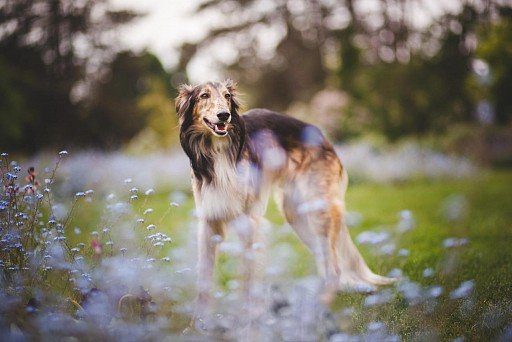
Video: Russian greyhound (Borzoi)
The appearance of the Russian canine greyhound
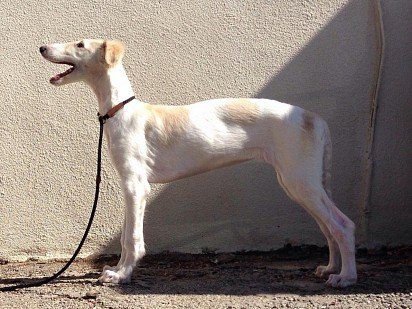

Russian canine greyhounds are the embodiment of sophistication and elegance. Among their own kind, these lean, ascetic handsome men stand out for their exquisite exterior and bewitching ease of movement. Despite the rather high growth (males – up to 85 cm at the withers, females – up to 78 cm), Russian greyhounds do not give the impression of heavyweight giants. At one time, this feature of the breed was very subtly beaten by the genius of the Art Nouveau era, Louis Icarus. As soon as the artist depicted an elongated, proud silhouette of a Russian greyhound a couple of times in his paintings, it became a fashion trend, and illustrations, engravings and even sculptures glorifying the regal posture of canine greyhounds fell on French and Russian fans of the breed like from a cornucopia.
Borzoi Head
The skull of the exemplary Russian canine greyhound has an elongated shape, which makes the dog’s head seem very narrow. The occiput in representatives of this breed is quite pronounced, and the stop line is noticeably smoothed.
Teeth and bite
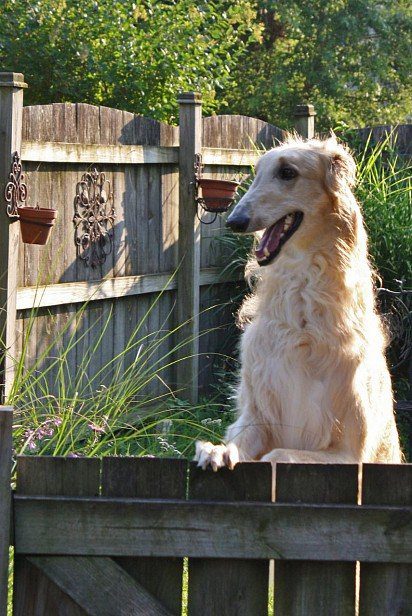

The teeth of the Russian canine greyhound are strong and white. The bite may be straight or scissor.
Nose
The back of the nose is long, with a slightly noticeable hump. The lobe is large, mobile, protruding forward.
Eyes
The Russian canine greyhound has beautiful expressive eyes: almond-shaped, slightly bulging, rich brown color.
Ears
The ears of the Russian greyhound are miniature, thin, set slightly above eye level. The ear cloth is noticeably drawn to the back of the head, and its tips are pressed tightly against the neck. In an excited or alert dog, the ears take a standing position.
Neck
The neck of the Russian Borzoi is dry, rather long and muscular. From the sides, the muscles are slightly flattened, which makes the neck look flattened.
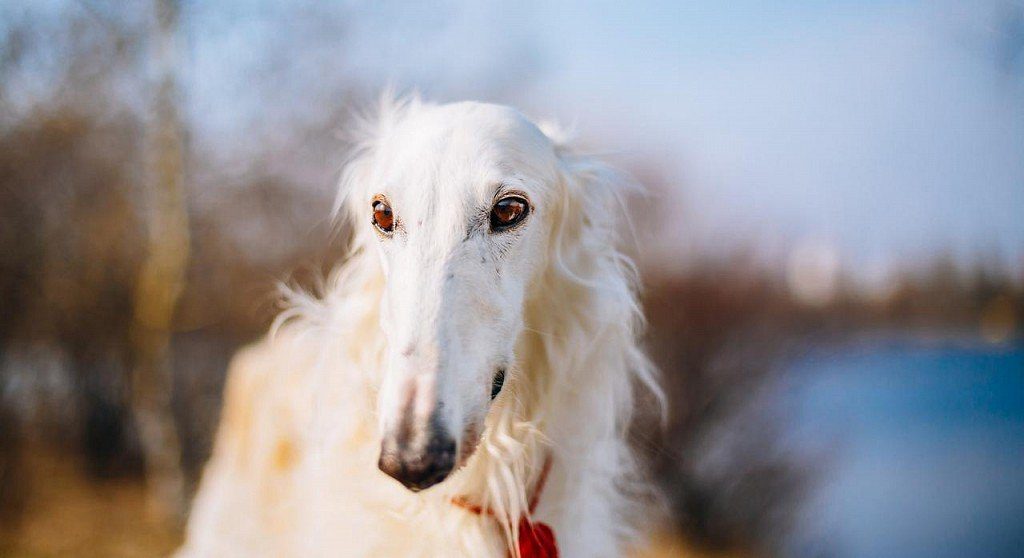

Frame
Due to the muscular back and massive, sloping croup, the topline forms a long arch, which is more pronounced in males. The chest of Russian canine greyhounds is deep, oval in shape, less than or equal in width to the croup. The abdomen is well tucked up: the bottom line is steep, with the so-called pickup.
Legs
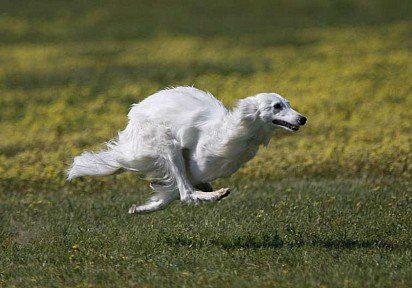

The forelegs of the Russian Borzoi are dry and well muscled. The shoulder blades are long, sloping type, the elbows are normal, looking back. The hind limbs of the RPB are set wider than the front ones. Thighs elongated, moderately muscled, hocks wide, well developed, with normal angulations. The paws of representatives of this breed are narrow, arched, of a hare type. The Russian canine greyhound moves in everyday life at a light trot, while hunting – with sweeping jumps (fast quarry).
Tail
Sickle-shaped, long and thin, with a lush dewlap. In a calm Russian canine greyhound, the tail is in a hanging position. If the dog is excited, the tail may rise, but not above the level of the back.
Borzoi Wool
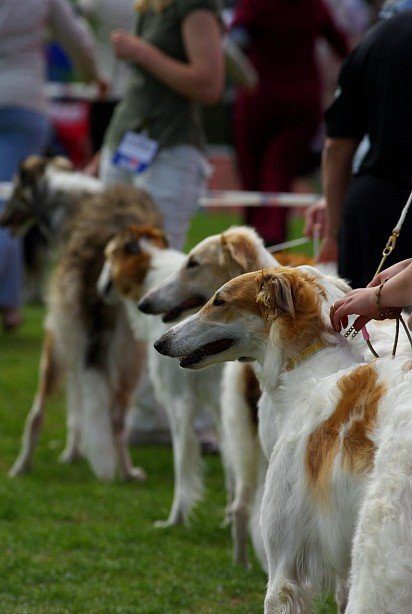

The body of the dog is covered with long, wavy or slightly curly hair. On the ears, head and front of the legs, the hair is very short and silky. On the neck of the animal there is a magnificent suspension of the latrine of the dog, the back of the thighs is decorated with cute “panties”. In the region of the croup and shoulder blades, the curl of the coat is steeper.
Color
All types of spotted and piebald colors are assigned to Russian canine greyhounds, with the exception of blue and chocolate tones. The dewlaps on the neck and tail of the dog, as well as the dressing coat on its thighs, are usually lighter than the rest of the body. A distinctive feature of dark-colored individuals is the muzzle with the so-called mazurina (black mask).
Defects and disqualifying vices
In terms of severity, defects in appearance can be both minor and serious. And if, for example, a Russian greyhound never gets the highest score for a hard coat or a lightweight constitution, then for aggression and an asymmetrical bite, she runs the risk of not being allowed to participate in competitions at all. Most often, the exhibition commission rejects Russian borzoi dogs for cardinal differences with the breed standard, for example, for the blue color of the iris, the absence of one of the teeth, the blue or brown shade of the coat, and also for the presence of dewclaws. The incorrect position of the fangs, in which the soft tissues of the oral cavity are damaged, also leads to a complete disqualification.
Photo of Russian Borzoi
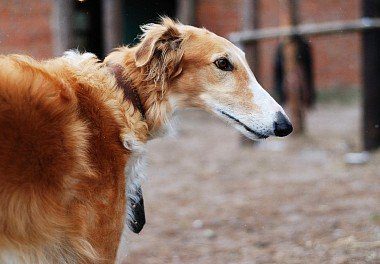

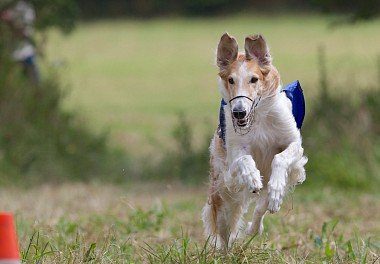

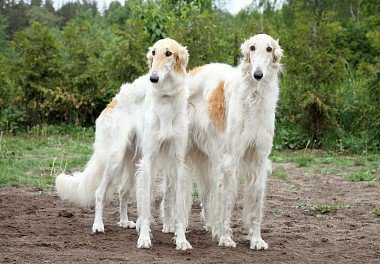

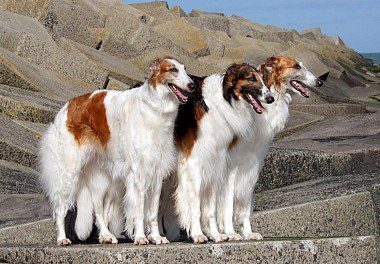

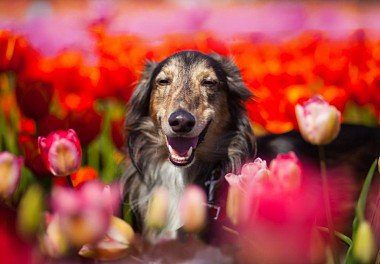

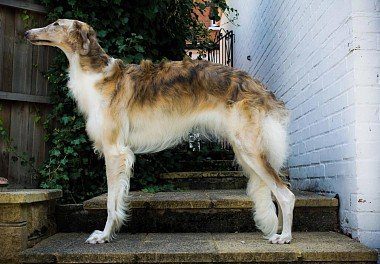

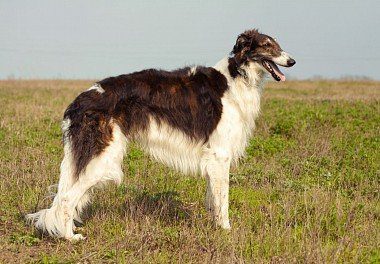

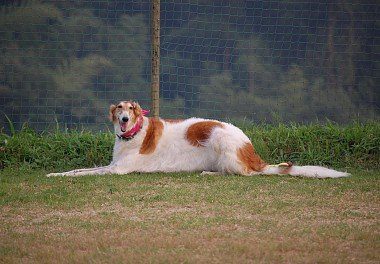

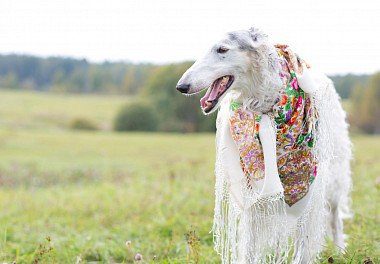

The nature of the Russian Borzoi greyhound
Russian canine greyhounds are real geniuses of reincarnation. On the hunt, they are unstoppable and reckless, but as soon as the animals are within the walls of their home, melancholy quiet ones immediately wake up in them. In general, Russian greyhounds are one of the most comfortable pets: they are “not talkative” and do not follow the owner with their tail to get their portion of attention. The Russian Borzoi prefers to spend time free from hunting and walking in a passive way, resting on the couch or nestling at the feet of the owner. The breed is also not capable of all sorts of unpleasant surprises, such as torn wallpapers and perforated shoes, of course, provided that the dog is regularly walked.
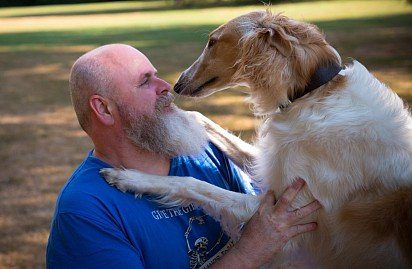

The Russian canine greyhound does not feel much love for children, but it does not harbor much hostility either. Most of all, she is annoyed by sudden screams and laughter, therefore, with the arrival of the owner of noisy children’s companies in the home, the dog, as a rule, tries to retreat. Due to their peaceful nature and innate delicacy, Russian canine greyhounds are moderately polite in communication, including with strangers, but in return they demand exactly the same attitude towards themselves. Possessing a very vulnerable psyche, the Russian greyhound is extremely sensitive to any injustice, so the punishment for this breed is a real tragedy.
Increased excitability is another distinguishing feature of the character of Russian canine greyhounds. A pet was just walking imposingly at your feet, but then a random cat loomed on the horizon, and your phlegmatic dog seemed to be blown away by the wind. The reason for such a sharp transition from one state to another is the instinct of persecution, which in this breed has evolved to the level of mania.
The intellectual performance of the Russian greyhound is quite good, although inexperienced owners at first may encounter difficulties in raising and training pets. It is important to understand here that the Russian greyhound is not a companion and not a service dog, but a professional hunter whose main goal is to work with game. Accordingly, all the intelligence and ingenuity of the breed goes into the process of baiting the beast. At the same time, in ordinary life, the dog’s brain works in energy saving mode, which is sometimes mistakenly regarded as stupidity.
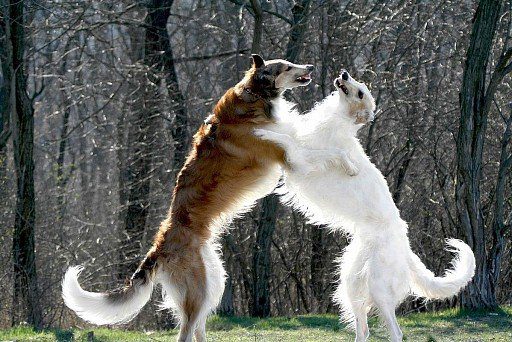

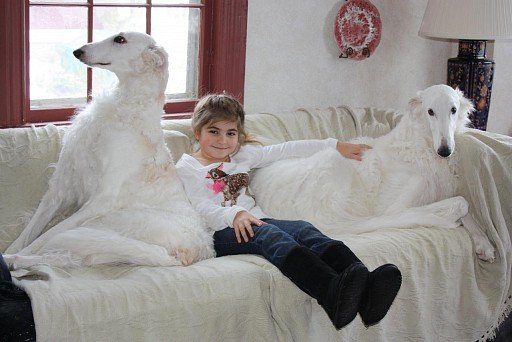

Borzoi Education and training
Despite the fact that, for the most part, Russian canine greyhounds are malleable and obedient dogs, their students are not the most diligent. By the way, experienced hunters are of the opinion that recording representatives of the breed for OKD (General Training Course) only spoils their natural talents. With a Russian greyhound, you always need to keep your finger on the pulse: one accidentally escaped shout or a sharp threatening movement towards the dog – and she immediately regards this as an attempt to humiliate her dignity. So you should respectfully behave during lessons with these “aristocrats”. Moreover, the Russian canine greyhound belongs to those breeds whose representatives have a pronounced individuality, so the training program and style for each individual individual can vary dramatically.
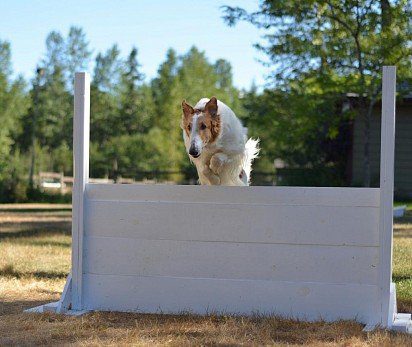

The first and most important skill that the owner must form in his pet is the ability to clearly distinguish between hunting and ordinary life. Smoothly wean the puppy from chasing everything that moves during walks – the command “Next!” to help. In no case do not let him off the leash if there are smaller four-legged creatures nearby. Trying to educate domestic servants and a circus performer from a Russian canine greyhound is also not worth it. With all the softness of character, greyhounds will not bring slippers and walk on their hind legs.
You will have to forget about monotonous training with this breed, since monotony for a Russian greyhound is the worst of evils. Guide the dog seriously, but without coercion, rewarding success with treats. By 6 months, the puppy should learn the basic commands of obedience (“Come!”, “Next!”) And be able to walk on a leash. The time period from 6 to 10 months is considered a period of teenage rebellion. The matured dog is trying to assert his own authority, in every possible way ignoring the prohibitions. For this period of time, it is better to be patient and restrain yourself as much as possible when there is a desire to properly hit the shaggy bespredelschik in loin parts.
Fighting teenage leadership in Russian canine greyhounds is better with additional physical activity. Moreover, the more work and training you put on a presumptuous puppy, the less time he will have for petty dirty tricks. The easiest way in this regard is for owners who, in addition to a puppy, already have an adult Russian greyhound at home. An experienced dog will quickly put in place a teenager who has become crazed from an overabundance of energy, becoming an example and a senior mentor for him.
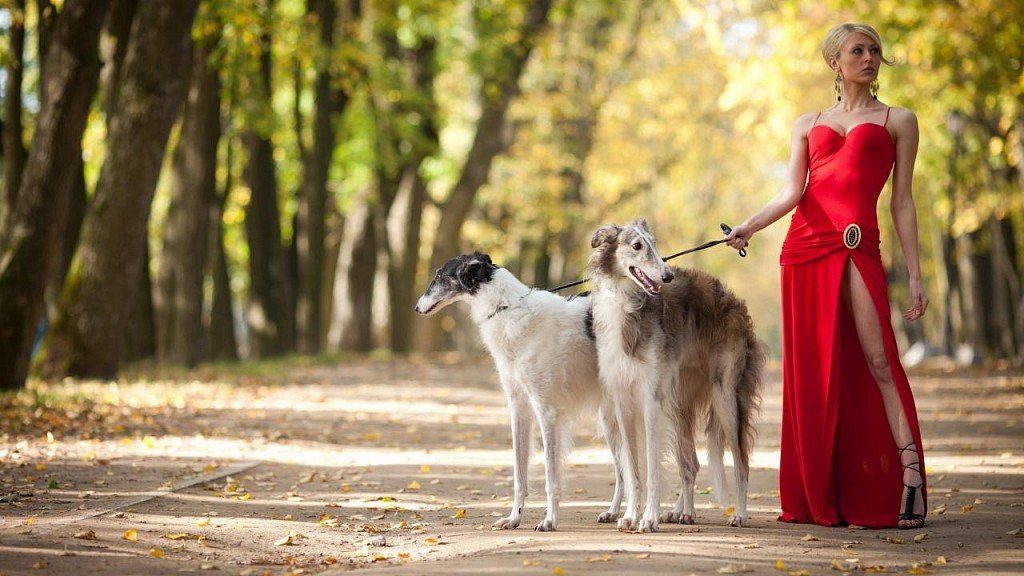

Hunting with a Russian Borzoi
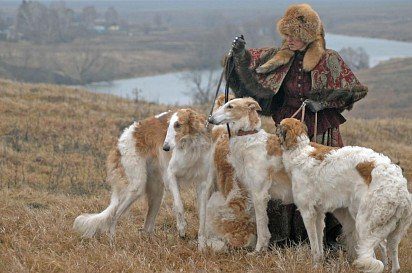

The Russian canine greyhound is an excellent hunter in the conditions of the middle lane, with which you can walk with equal success both on hares and foxes, and on a wolf. And the point here is not only in natural instincts and innate intelligence, but also in a special, linear setting of the paws, which allows the dog to sharply change the direction of movement, thereby ensuring lightning-fast capture of game. However, despite such obvious advantages of the breed, today’s hunters often refuse its representatives as low-yielding pets. The reason for this neglect lies in the fact that Russian greyhounds are often crossed with other hunting dogs, as a result of which the stalking instinct in the offspring does not manifest itself clearly enough. In addition, not all owners understand that although hunting with a Russian greyhound is a seasonal matter, develop and hone the skills and abilities of the pet will have throughout life. A dog that goes out to hunt twice a year, and the rest of the time lying on the couch, will definitely not overwhelm its owner with hunting trophies.
Russian canine greyhounds are sprinters. The optimal conditions for demonstrating the hunting talents of the breed are a treeless area up to 500 m long, although, as practice shows, for most animals, a 200-300-meter acceleration is enough to grab the prey and present it to the owner. An important role in the success of the hunt is played by the innate impulsiveness of dogs: upon seeing the beast, the Russian canine greyhound switches from standby mode to race mode in a fraction of a second. If attempts to overtake the prey were unsuccessful, the dogs are able to repeat the failed forced march after a half-hour pause.
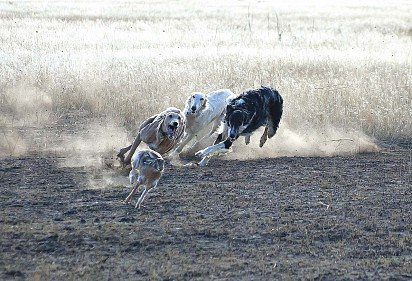

Training for the first hunt can be considered the training of the Russian borzoi to the collar. You can start lessons from the age of 6 months: the puppy must learn to walk in a group, not rushing forward and not trailing at the end of the pack. You can bait a Russian greyhound for game as early as 10-12 months, but at first the animals are allowed to make no more than one pursuit attempt. Adolescents are not yet as hardy as individuals who have previously participated in the hunt, and easily overwork. It is great if the owner took two puppies into the house at once, and it is not at all necessary that both be of the same breed. As they mature and compete for the role of alpha male, they will try harder to prove themselves in the course of training.
Inoculation of a teenager with a Russian canine greyhound to a wolf is best done in the company of experienced dogs and their owners. But you can go on a hare alone, and in general it is more expedient to start training young greyhounds in the race for game with the “eared brethren”. Often, during the first hunt, greyhounds cannot restrain themselves and tear the small animal apart, or even eat it before the owner arrives. This, of course, is not a reason to be upset, but it’s still worth reproaching the pet for such behavior. In addition, if your ward demonstrates such “successes” in field tests, he will not see a diploma.
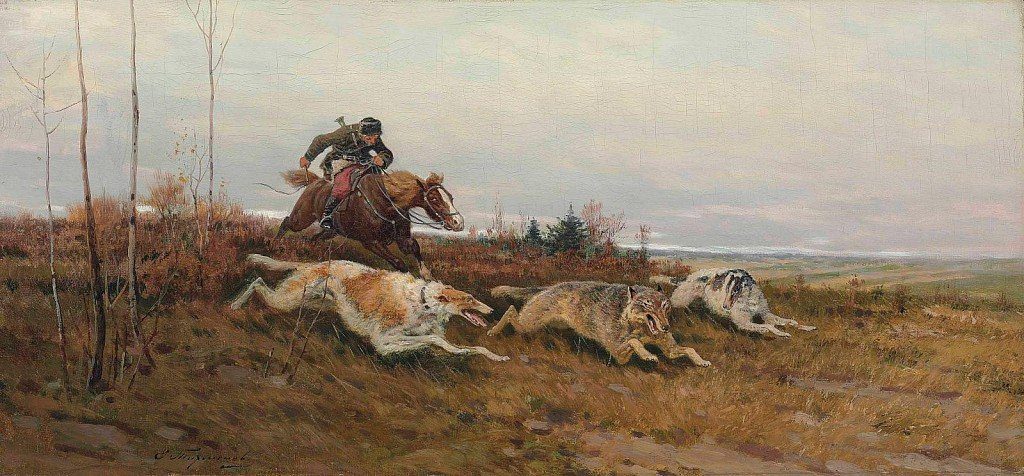

Artist Evgeny Alexandrovich Tikhmenev (1869–1934)
Maintenance and care
Russian canine greyhounds are not demanding on space, which makes it possible to keep them in a city apartment (with a sufficient amount of physical activity). True, one should not forget that representatives of this breed do not extremely respect ordinary beds and are unlikely to be content with a modest corner in the hallway. Most of all, Russian canine greyhounds love to lie on the sofa or the master’s bed, and you should not be angry with them for this. In this way, the dogs relax, trying to give rest to the back and strained muscles. Some experts even advise giving the animal a separate sofa with an orthopedic mattress at the disposal of the animal, if the living space allows. As for yard individuals, it is worth building a spacious aviary for them and installing a booth in it with a height of at least 1 m and an area of about 1.5 m² with insulated walls and floors.
Borzoi Hygiene
The thin coat of Russian canine greyhounds is practically devoid of undercoat, but often strays into tangles. However, dogs manage to keep their coats clean on their own. The owner only needs to comb the animal a couple of times a week, and after walking, pick out the specks entangled in his fur. During the molting period, the same manipulations will have to be performed daily, which, in general, is a common occurrence for dogs of any breed.
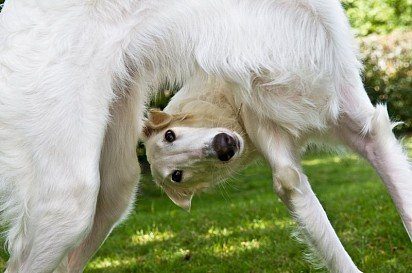

On the issue of the frequency of bathing, breeders of Russian canine greyhounds have not come to a consensus. As a result, some dog owners recommend washing the Russian greyhound every three months, while others advise completely abandoning this activity and spending bath days only in the most urgent cases, for example, when the animal gets dirty in liquid mud. The eyes and ears of the dog do not require specific care. Just keep them clean by removing wax from the ear funnel and wiping dirt accumulated in the corners of the eyes with a damp piece of cloth.
The claws on the paws of Russian canine greyhounds should be trimmed so that they do not interfere with the animal while running. Hair between the fingers is also cut off, which gets dirty very quickly and can become a place for accumulation of bacteria that provoke skin infections. In addition, greyhounds living in apartments will have to wash their paws after each walk. Moreover, in winter, this procedure cannot be evaded either – the reagents that are sprinkled on roads in our country are extremely poisonous and can cause poisoning in a dog when it suddenly decides to lick its own paw.
Paddock
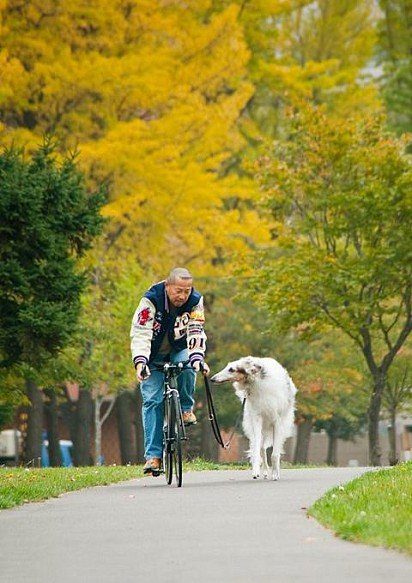

If you can’t motivate yourself for morning and evening runs, then the Russian Borzoi is your dog. No matter how passively the representatives of this breed behave at home, it is not in their rules to gracefully walk along the sidewalks and park paths, which means that while walking your pet, you will also have the opportunity to properly warm up. If walking does not inspire, tie a leash with a greyhound to a bicycle and pedal as hard as you can: Russian greyhounds also respect such errands. By the way, it is necessary to go outside with a Russian greyhound in any weather, so you won’t be able to get away from the promenades in a drizzling rain.
It is great if you have the opportunity to periodically take your pet out to nature, where he can give free rein to his own hunting instincts. In the conditions of the city, such a number will not work, so walk the dog strictly on a leash, if you do not want the pet interested in a stray cat to leave you forever, because the Russian greyhounds, carried away by the chase, simply do not hear the master’s commands and shouts. In addition, dogs that are not driven to hunt will have to find an interesting alternative hobby. This can be, for example, coursing (chasing a mechanical “hare”) or simple entertainment like running after the ball and frisbee.
Feeding
In the case of Russian canine greyhounds, experts advise adhering to the principles of fractional nutrition. Representatives of this breed are fed 3-4 times a day, dividing the daily ration into small portions. Dry food for greyhounds is also not contraindicated, unless it is a budget option from the nearest supermarket. The basis of the diet of the Russian canine greyhound, eating “natural”, should be lean raw meat. Breeders consider horse meat to be the ideal variety, since it is extremely rarely infected with brucellosis. The menu includes dogs and low-fat sea fish of the cod family, which, if desired and have free finances, can be easily replaced with squid meat.
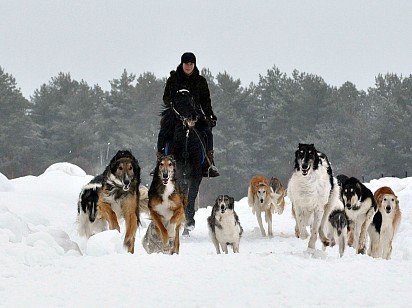

Of the cereals, buckwheat, oatmeal and rice are suitable for the breed. By the way, it is better to cook porridge from them by brewing, pouring boiling broth or milk over the cereals and leaving them to swell for half an hour. Vegetables are given to Russian canine greyhounds boiled or simply added to the soup. It is impossible to overdo it with sour-milk products, so pamper your four-legged friend with kefir or fermented baked milk more often.
For the normal growth and development of the Russian Borzoi, the correct balance of proteins and calcium is very important. For this reason, from the age of 4 months, when the change of teeth begins in puppies, mineral supplements are introduced into their menu. In addition, up to six months, dogs are given calcined cottage cheese and a chicken egg several times a week. But with pharmaceutical calcium-containing preparations, one should be more careful, since an excess of this macronutrient for a puppy’s body is no less harmful than its deficiency.
Prohibited Products:
- any food from the master’s table;
- legumes;
- potatoes and other vegetables with a high content of starch;
- sweets;
- fatty meat and lard;
- tubular bones;
- River fish.
Russian Borzois are usually fed after a walk, putting a sufficient amount of food in a bowl. The dog should not drive the bowl around the apartment, licking it clean.
Health and disease of the Russian Borzoi greyhound
The Russian Borzoi is a relatively healthy breed, but very sensitive to all types of anesthetics. In addition, many individuals are allergic to flea and tick remedies, so it is worth choosing such drugs especially carefully. As for the genetic predisposition to specific diseases, most often Russian greyhounds suffer from volvulus, bloating, retinopathy (damage to the retina), cataracts and Wobbler’s syndrome (compression of the spinal cord in the cervical spine).
How to choose a Borzoi puppy
- Choose February or March litters, the babies of which will be ready to move to a new home in May-June. In this case, you can diversify your pet’s diet with seasonal fruits and vegetables, which contain most of the vitamins necessary for a growing body.
- Do not get hung up on a specific type of appearance of the future pet (for example, the owner breeds white dogs, and you want a gray one). The Russian greyhound is one of the most diverse breeds, and each of its representatives is beautiful in its own way.
- If in the foreseeable future you hope to raise a professional hunter out of a puppy, ask if his parents have field diplomas. It is also not worth delving too much about hereditary talents, since hunting skills are not always transmitted from parents to children and largely depend on proper training.
- The exterior of a growing Russian greyhound puppy is constantly changing, so it is unlikely that you will be able to choose the most spectacular baby from the litter. However, visually assessing the correctness of the bite, the purity of the dog and the general condition of the future pet is still worth it.
Photos of Russian greyhound puppies
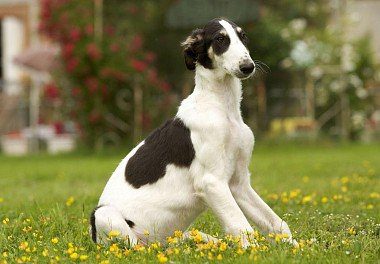

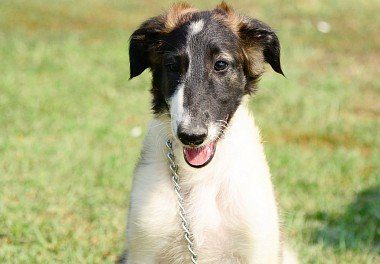

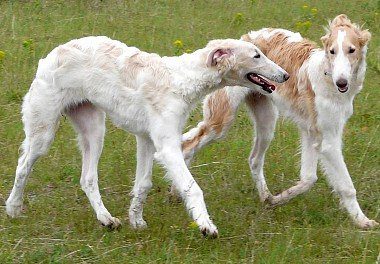

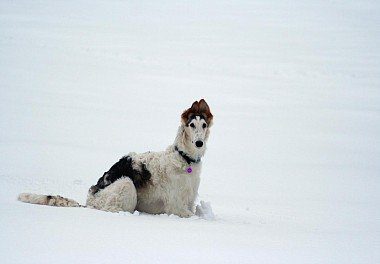

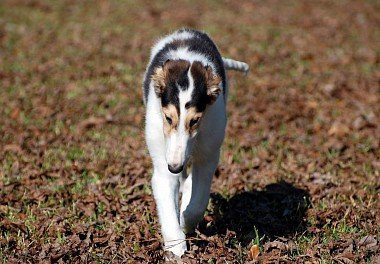

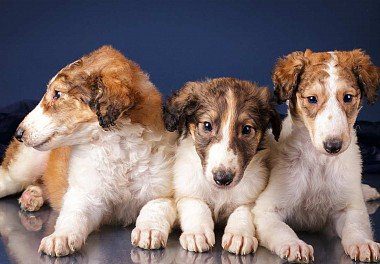

How much does a Russian borzoi cost?
If you want to become the owner of a show-class Russian Borzoi puppy, get ready to spend from 800 to 1000$ for it. Future miners of hares and foxes from parents with hunting diplomas will pull 400 – 500$. Since most dog breeders continue to believe that the first litter of Russian greyhounds is not always successful, there is a chance to save a lot on this cliché. So many breeders sell the offspring of a female who has bred for the first time at a reduced cost (from 250$ rubles), which they notify potential buyers in advance.





